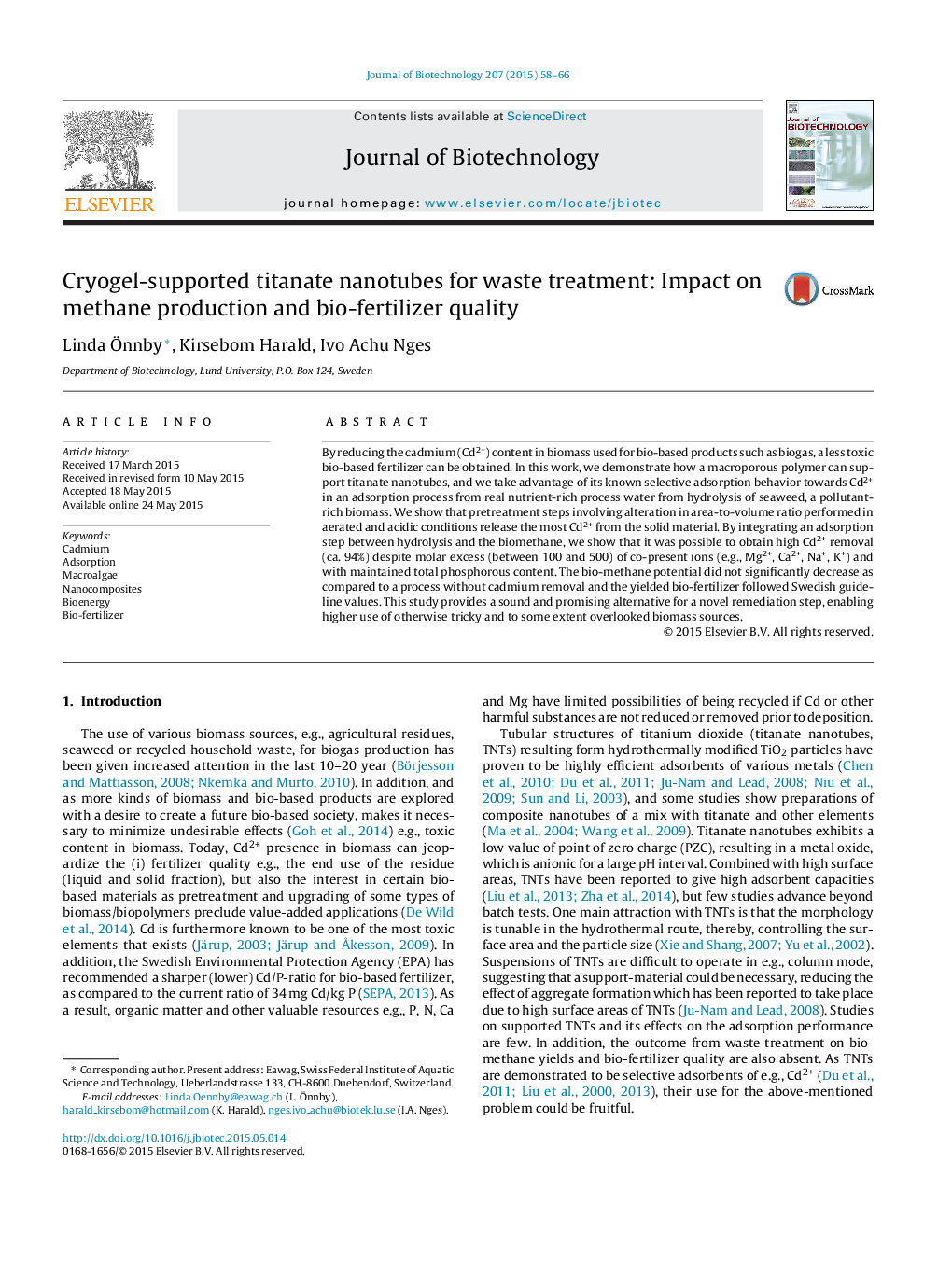| Article ID | Journal | Published Year | Pages | File Type |
|---|---|---|---|---|
| 6491081 | Journal of Biotechnology | 2015 | 9 Pages |
Abstract
By reducing the cadmium (Cd2+) content in biomass used for bio-based products such as biogas, a less toxic bio-based fertilizer can be obtained. In this work, we demonstrate how a macroporous polymer can support titanate nanotubes, and we take advantage of its known selective adsorption behavior towards Cd2+ in an adsorption process from real nutrient-rich process water from hydrolysis of seaweed, a pollutant-rich biomass. We show that pretreatment steps involving alteration in area-to-volume ratio performed in aerated and acidic conditions release the most Cd2+ from the solid material. By integrating an adsorption step between hydrolysis and the biomethane, we show that it was possible to obtain high Cd2+ removal (ca. 94%) despite molar excess (between 100 and 500) of co-present ions (e.g., Mg2+, Ca2+, Na+, K+) and with maintained total phosphorous content. The bio-methane potential did not significantly decrease as compared to a process without cadmium removal and the yielded bio-fertilizer followed Swedish guideline values. This study provides a sound and promising alternative for a novel remediation step, enabling higher use of otherwise tricky and to some extent overlooked biomass sources.
Related Topics
Physical Sciences and Engineering
Chemical Engineering
Bioengineering
Authors
Linda Ãnnby, Kirsebom Harald, Ivo Achu Nges,
